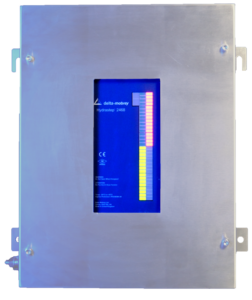
Process instrumentation: helping to transform waste to energy and reduce landfill by 90%
To run a waste-to-energy plant, you need process instrumentation which can make you feel confident in the safety and reliability of your plant, which is where Delta Mobrey comes in. With over 100 years of engineering experience, we are experts in helping waste-to-energy companies with their process implementation.
Our Products
At Delta Mobrey, we manufacture a wide range of products for measuring and reporting changes in temperature, pressure, level and flow for the waste-to-energy industry.
Our products have been designed with accuracy and safety in mind, allowing you to run your plant more safely and more efficiently. View our product page for more.
Our instrument specialists can help you with the selection process and provide the support, advice, and fast response that you need.
Product Focus: Hydrastep

Hydrastep has been designed specifically by Delta Mobrey to monitor boiler levels, irrespective of industry, in the simplest and most reliable manner making it a great option for all waste-to-energy companies looking to maximise the smooth operation of their facilities. Hydrastep gives confidence in knowing their water-tube boilers are protected from low water levels, as Hydrastep gives continuous feedback on the levels of water and steam contained within the boiler itself.
Hydrastep’s reliability is a great alternative to sight glass in the monitoring of steam and boiler and was recommended in the CEA’s latest guidance on the safe operations of water-tube Boilers. This document BG11 provides designers and operators with a better understanding of water-tube boiler systems, specifically how to maintain a boiler system safely and efficiently as well as being environmentally friendly.
Tackling our long-term problems with landfills
Discover more about our waste-to-energy products and how WTE looks to reduce the amount of landfill by up to 90% in our latest brochure.


